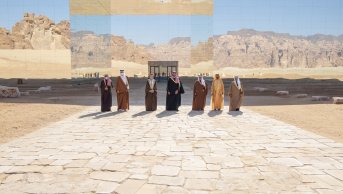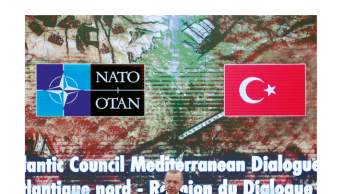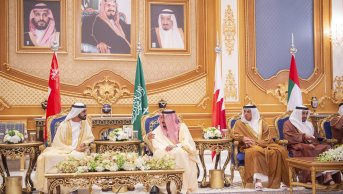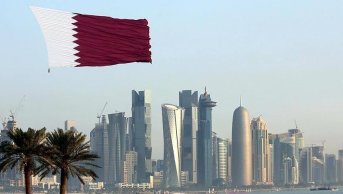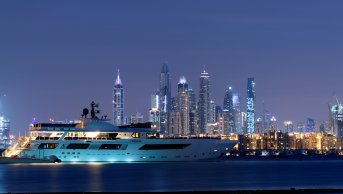Two Similar Stories: Mohammed bin Salman and Salvator Mundi
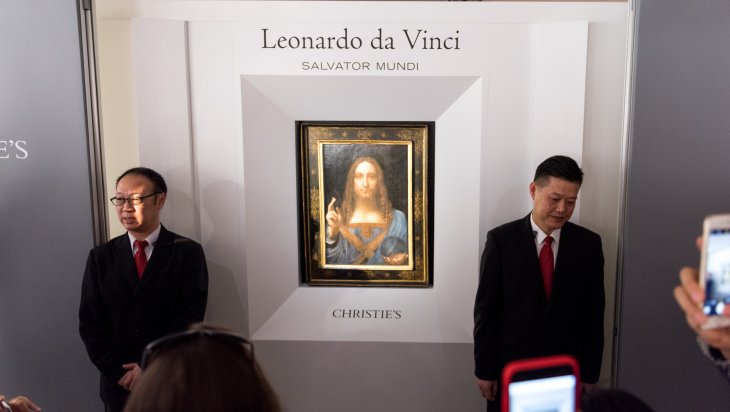
In 2017, through a contact, Saudi Crown Prince Mohammed bin Salman purchased Leonardo da Vinci's Salvator Mundi painting at a record price of $ 450 million. While he was determined to pay such amount to the work that had become the world's most expensive painting after this purchase, and the crown prince believed that this painting was made by the Leonardo da Vinci himself. However, with the escalation of the arguments that the work that depicted the Prophet Jesus and also called the "male Mona Lisa" was not directly made by Leonardo da Vinci, it seemed that this painting of the crown prince, which is worth about half a billion dollars, was actually not a work of art with the authenticity he expected, which had turned into an expensive investment. While, the purchase of the painting coincided with the period when Mohammed bin Salman was introduced as a visionary and modernist successor that would radically transform Saudi Arabia in the Western world, this period, in which debates about the authenticity of the painting gained weight, coincided with a period in which the image of the crown prince in the international community began to be seen more and more negatively, on the contrary to the first one.
So what is the story of this half-billion-dollar painting telling us about the shining and fading international image of Mohammed bin Salman? In other words, what does this table symbolize for Mohammed bin Salman's Saudi Arabia?
When considered as a whole, the story of the Salvator Mundi painting is similar and parallel to the story of Mohammed bin Salman on the march to power. Before the Salvator Mundi painting contained doubts about its authenticity, it gained serious worldwide significance, and parallel to this, the polished reformist image of Mohammed bin Salman actually concealed the authoritarianism within. As a result, the Salvator Mundi was able to find a buyer for a record price of $ 450 million, doubling even previous records. On the other hand, when the recipient’s father, Salman bin Abdulaziz al-Saud, became the king of Saudi Arabia in 2015, Mohammed bin Salman started to rise in the state agency and this rise had a great impact, especially in the Western world, within the scope of various PR campaigns. Mohammed bin Salman's plan to transform and modernize the kingdom economically and socially within the scope of the "Vision 2030" project was created with enthusiasm, especially by international business circles due to its potential to become a new and large market to the outside world. This was followed by the presentation of Mohammed bin Salman as a modernist and visionary leader, who would break the traditional authoritarian stereotypes of Saudi Arabia and integrate the country with the outside world more economically and socially, especially in the US and European media. The announcement of a futuristic technological city project such as NEOM to the world also took place in the following context, contributing to this modernist image built by Mohammed bin Salman.
The rediscovery of Leonardo da Vinci's painting Salvator Mundi, similar to the rise of Mohammed bin Salman in the first place and its acceptance by the Western world was considered the greatest art event of the last 100 years and had a great impact on the art world. The rarity of having fewer than 20 paintings that Da Vinci had made by his own hand, which were already in the collections of museums, made Salvator Mundi a great subject of discussion with its artistic and economic dimensions. Advertised as the "Last Da Vinci" motto, this painting was approved as a true Da Vinci work at the National Gallery in London in 2011-12 and included in Leonardo's exhibition of surviving paintings.[1] Then the painting was purchased by a Russian oligarch for 127.5 million dollars, and then by Mohammed bin Salman through some contacts in 2017 for a record amount of 450 million dollars.
This image, which was drawn based on Mohammed bin Salman's purchase of Salvator Mundi, which had a great impact in the art world and was advertised as Leonardo's last work, was in fact compatible with the image of the modernist crown prince. Although the fact that Saudi Arabia stands out with its hosting of the holy places of the religion of Islam and that the future king of this country has spent half a billion dollars on a painting depicting Jesus Christ is a great contrast and creates discontent in the domestic public opinion, it was a welcome move for the Western world.
With Mohammed bin Salman, investments in artworks and museums have come to the fore as elements that play an important role in the social transformation of the kingdom and the construction of a new Saudi identity. In addition to such a cultural role, it is planned to unearth ancient archaeological sites such as Mada’in Salih and Al-‘Ula around various projects and turn them into a tourism center, and to build new museums around the world to exhibit world-famous artifacts, as well as play an important role in increasing the country's tourism income and promoting it to the world. Ultimately, the essence of Mohammed bin Salman's Vision 2030 project is to reduce the country's dependence on oil, diversify the economy, and create internal employment by attracting investment to the country. In this context, it serves various purposes such as social and cultural identity building, prestige, and economic gain through investing in museums and artworks. The Salvator Mundi can be considered as part of such a plan as it has the potential to attract a significant number of tourists to the country.
However, the cogency and credibility of both Mohammed bin Salman and Salvator Mundi are damaged in the international public opinion and their images are tarnished. The fact that the Salvador Mundi painting was not exhibited in the Louvre Abu Dhabi museum in 2018, since it was purchased by Mohammed bin Salman, and later at the Paris Louvre Museum in 2019, at the grand exhibition to commemorate the 500th anniversary of Leonardo da Vinci's death, raised questions about why the painting was not displayed and where it was.
The French documentary "The Savior for Sale" directed by Antonie Vitkine focuses on this questionable aspect of the story of the Salvator Mundi painting. Based on the documentary, Suzanne Rowan Kelleher brought the debate about the reality of the painting to light in her article in Forbes. Accordingly, the painting arrived in Paris in June 2019 to be included in the Da Vinci exhibition in the Louvre, and as a result of the technical studies and analysis there, it was revealed that the painting did not belong entirely to Leonardo da Vinci and he made only minor contributions. However, despite these findings, it is claimed that the findings including the scientific analysis of the case have not been published and that Mohammed bin Salman insisted that Salvator Mundi be presented at the exhibition right next to the Mona Lisa and as a genuine Leonardo da Vinci work but after the French President Emmanuel Macron rejected this request, the crown prince refuses to lend the painting. Besides, in the book "The Last Leonardo", the art critic Ben Lewis reached a similar conclusion and claims that Salvator Mundi painting belongs to Leonardo's workshop, but he only made some finishing touches.[2] All these claims and new discussions point to deep suspicions that Salvator Mundi is the last Leonardo da Vinci painting, contrary to what was originally presented.
As a result, the humanitarian tragedy created by the civil war in Yemen, the murder of Jamal Khashoggi, and various human rights violations within the kingdom not only damaged the cogency and credibility of Mohammed bin Salman in the international arena by impeding his previous polished image but also reversed it. It seems clearer that the modernist and visionary image drawn specifically for Mohammed bin Salman is suspicious and absent and that Mohammed bin Salman is actually no different from other authoritarian leaders in the region, and his vision project which was based on diversification of economic resources, is essentially trying to be carried out within authoritarian patterns as a controlled and pre-emptive obligation that aims to preserve the survival of the institutions of the monarchy and the Saudi regime under existing structural pressures. Similarly, it can be stated that these recent discussions about the Salvator Mundi also undermine the reality, economic and artistic value of the painting, raising deep doubts about whether the painting is the real work of Leonardo da Vinci.

